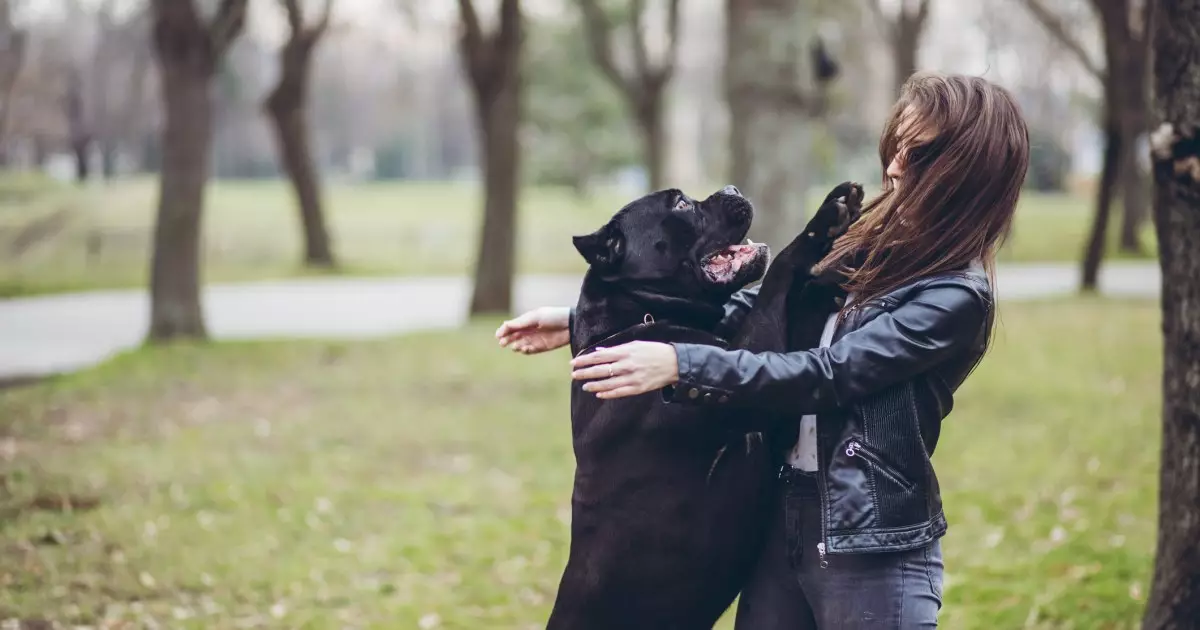Dogs are known for their exuberant expressions of affection, and nothing can be as heartwarming as a puppy leaping to greet you at the door. This behavior, while often cute in a small dog, can become troublesome as a pet grows into an adult. Understanding the instincts behind this behavior is crucial in redirecting it effectively, ensuring both you and your dog can enjoy a peaceful and pleasant interaction.
Jumping up on humans is primarily rooted in a dog’s natural instincts. From puppyhood, dogs are driven by a desire for social interaction and exploration. Jumping serves two main functions: it is an expression of excitement, and it enables them to sniff our faces, which is akin to a handshake in the canine world. This early engagement with humans establishes a bond and reinforces the dog’s social behavior. Unfortunately, what begins as an innocent greeting can escalate into a behavior that is less charming and more disruptive as the dog grows.
The difference in perception is stark; the nimble leap of a small puppy might be met with adoration, while a full-grown dog launching itself onto a guest could lead to discomfort. Thus, while jumping may seem harmless initially, it can become problematic if not addressed promptly.
The key to managing this behavior lies in early intervention. Puppies naturally crave attention and affection, and as pet owners, we tend to respond positively to their leaps of joy. However, it’s essential to establish clear boundaries from the outset. Teaching your puppy to keep “four on the floor” is critical in developing a well-mannered adult dog. Consistency in training is paramount. This means always discouraging jumping, regardless of the situation or our own state of mind.
To reinforce this desired behavior, it’s important to redirect your dog when they jump. Instead of giving in to their demands for attention by engaging with them or rewarding them with praise while they are airborne, owners need to pivot away and ignore the canine’s efforts for attention. Commanding them with a firm “off!” followed by a request for an alternative behavior, like sitting, helps convey that calm behavior is what earns affection and attention.
Positive reinforcement is pivotal in modifying your dog’s behavior. Once the dog sits or refrains from jumping, shower them with praise and treats. The use of calm tones and gentle movements will prevent further excitement that could lead back to jumping. Conversely, reinforcing undesirable behavior, even unintentionally, complicates training efforts. For instance, if you allow your dog to jump on you at certain times but not others, it sends mixed signals that can confuse your pet and prolong the behavioral issue.
Practicing politeness during greetings is essential, especially during scenarios where your dog is most likely to jump, like returning home from work. One effective strategy is to practice brief departures throughout the day; this helps your dog calm down and learn to anticipate a polite greeting rather than an impulsive jump.
The habitual nature of a pet’s behavior means establishing a consistent greeting ritual can significantly reduce jumping. Ensure that anyone interacting with your dog, from family members to guests, follows the same protocols regarding jumping. This collective approach reinforces the same message, leaving no room for confusion.
If you have an adult dog who has developed a habit of jumping, you can still encourage better behavior by meeting them at their level. Bending down to greet your dog can help foster a calm atmosphere and redirect their attention downward, which diminishes the impulse to jump.
Modifying a dog’s instinctual behavior, such as jumping, requires patience and persistence. Dogs thrive on routine and understanding of expectations; therefore, honing their impulse control through consistent training can accelerate the learning process. Emphasizing desired behaviors through activities that stimulate your dog mentally and physically can also alleviate the energy that often drives jumping.
While jumping is a natural and instinctive behavior for dogs, it becomes necessary to address this tendency as they grow. By setting clear boundaries, encouraging polite interactions, and maintaining consistent behavior across all situations while rewarding the good behaviors, you can cultivate a more relaxed and enjoyable environment for both you and your canine companion. Through patience and proper training, jumping can be transformed from a disruptive behavior into an affectionate and respectful greeting.

